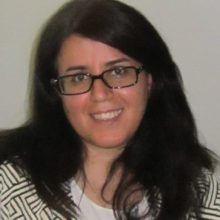Postdoctoral Researcher, University of Pennsylvania
Email
Abstract
Computational meta-platforms: Using light to solve mathematical equations
Electromagnetic waves afford fascinating computational capabilities that are promising for parallel, low-energy, and fast information processing and analog computing. Since the electronic computer technology is starting to approach its physical limitations, it is of great interest to explore novel venues that may help the increasing demand for higher computational speed and energy-efficiency.
Along this general route, we investigate the possibility of using artificially engineered materials, i.e. metamaterials and meta-systems, to solve general mathematical equations in the form of linear integral equations [*]. Instead of the flow of electrons in a conventional electronic device, here we use photons to carry the information in a material-based platform. Our systems are composed of three main elements: Kernel operator, feedback loop, and excitation/sampling nodes. We show that the complex amplitude of the wave, which is an analog signal generated in the system upon excitation, is the solution of the desired linear integral equation defined by the Kernel operator.
We present two separate approaches to implement our “equation-solving” systems. These techniques mainly differ in the physical platforms used to implement the Kernel operator, while both are capable of devising general complex, asymmetric, and translationally variant kernels. In the first approach we use a dielectric platform consisting of moderate/high index materials; replicating the mathematical relation defined by the given integral operator in a physical system. In this case, an optimized, inhomogeneous distribution of permittivity inside a compact block represents the mathematical Kernel. Kernel block is positioned inside a feedback loop (internal or external feedback), and directional couplers are employed as excitation and sampling nodes along the feedback loop. One of the main advantages of this technique is the ultracompact size of the equation solver compared to, e.g. the conventional Fourier-based analog computing elements.
In the second approach the Kernel operator is formed by employing multiple Mach-Zehnder interferometers/couplers units, arranged in the form of a densely connected mesh. We make the physical representation of the Kernel by adjusting the phase factor distribution in the interferometers. While in this approach the footprint of the device is potentially larger, an immediate advantage of this technique is the inherent reconfigurability granted via Mach-Zehnder interferometers.
As the information is carried with waves/photons, the processing can, in principle, be completed with near-zero energy consumption. In addition, these techniques are readily compatible with the silicon photonics technology and are envisioned to pave the way for future compact, integrable, and fast optical analog computing systems.
[*] Joint efforts with Brian Edwards, Mario Junior Mencagli, and Nader Engheta, University of Pennsylvania
Bio
I received my Ph.D. in Electrical Engineering from the University of Texas at Austin in 2016 and I am now a postdoctoral researcher in Prof. Nader Engheta’s group in the department of Electrical and Systems Engineering at the University of Pennsylvania. I also hold M.Sc. degree (summa cum laude, highest rank in the engineering program, 2011) and B.Sc. degree (2007) in electrical engineering (fields and waves) from the University of Tehran, Iran.
My research is highly multidisciplinary and requires a vast knowledge of electrical and optical engineering and science, as well as materials science, and physics. Broadly speaking, I am interested in creating novel optical wave-matter interactions that are not commonly available in nature. During my Ph.D. at UT-Austin, I focused on engineering the individual and collective scattering properties and absorption features of nanometer-scale objects. Among many projects, I proposed minimum-scattering optical sensors. These are non-perturbing elements capable of efficiently collecting signals from their surrounding medium, without being detected. This idea led to the first proof-of-principle device we later implemented in the group. My Ph.D. research resulted in one book chapter, 15 journal papers, and several presentations and contributions in prestigious conferences. My work has also been recognized by multiple travel grant awards, the George J. Heuer, Jr. Ph.D. Endowed Graduate Fellowship from UT-Austin, honorable mention at the IEEE AP-S International Symposium on Antennas and Propagation student paper competition, Professional Development award from UT-Austin, and the IEEE Photonics Society Graduate Student Fellowship in the final year of my Ph.D. studies. I have been also selected to attend the prestigious Gordon Research Conference on Plasmonics, in 2012 and 2016, to present my Ph.D. research.
As the postdoc at the University of Pennsylvania, I am currently engaged in several projects. I started a new project to design complex structures that can perform mathematical operations with microwave and optical waves. The goal of the project is to have materials platforms that can do mathematics with light, and consequently to reduce the energy consumption of these computations, paving the way for a new generation of faster, more efficient, and smaller optical processors. I am also involved in collaborative projects on extreme local wave engineering, and forward algorithms to design computing devices.
My goal is to pursue a career in academia, where I can combine my passion for science and research, with my love for teaching, collaborative work, and group leadership. I have had the opportunity to work with younger students both as teaching assistant and research mentor during my Ph.D. and postdoc. These interactions and experiences have helped me to develop valuable skills of effective communications with students. I also enjoy contributing to the scientific community and I am an active reviewer for various scientific journals from American Physical Society (APS), Optical Society of America (OSA), and Institute of Electrical and Electronics Engineers (IEEE).
